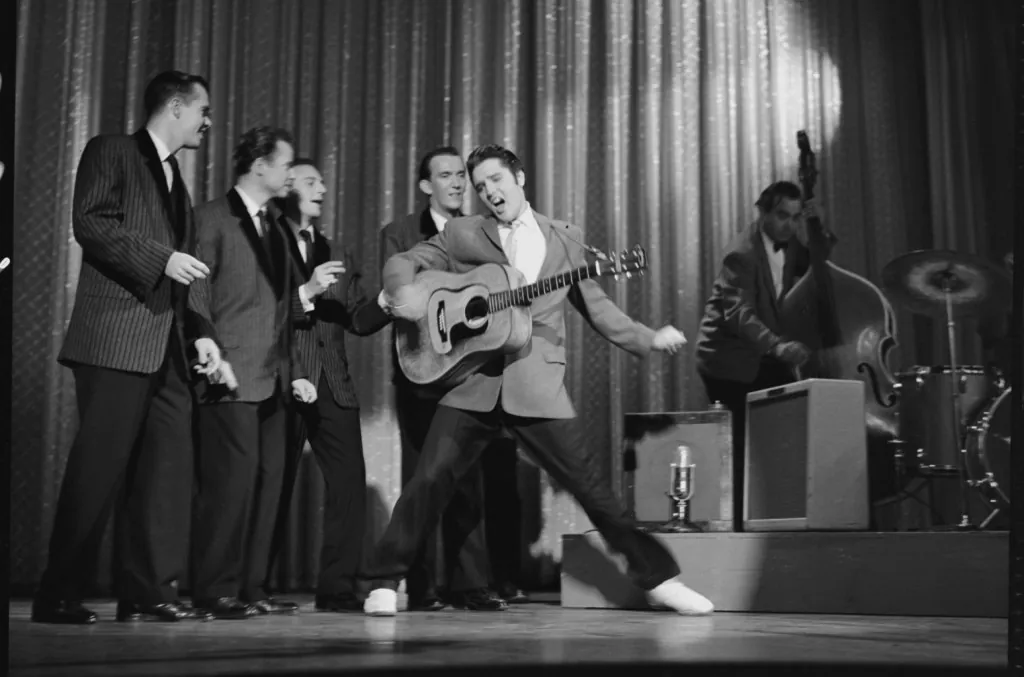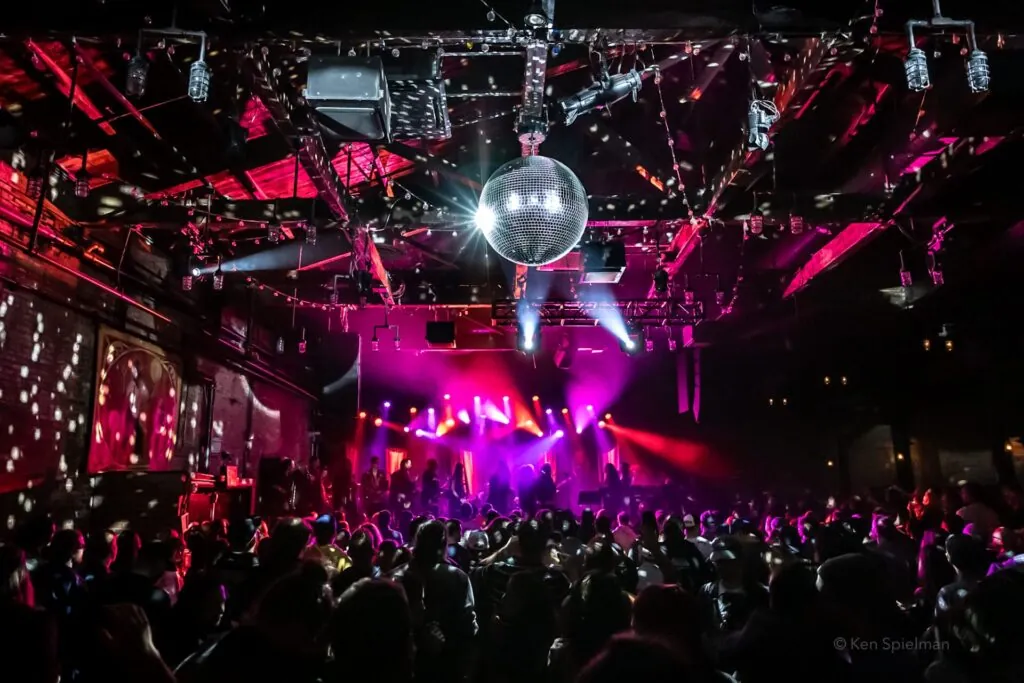How Do You Tell the Story of Live Music? ‘Rock Concert’ Author on Tackling the Superstar Subject

In the live music business, it doesn’t get any bigger than stadium concerts. Thanks to the large seating capacity of most stadiums, artists playing at the top echelon of touring can earn $4 million to $5 million per show — double and triple what they can earn at arenas.
But the model for stadium touring business wasn’t drafted by a major concert promotion company or a professional sports executive, but by a 16-year-old girl named Kay Wheeler who found herself swept off her feet by a Mississippi singer named Elvis Presley. According to the new book Rock Concert by Wall Street Journal music and arts contributor Marc Meyers, Wheeler convinced the Cotton Bowl to host a concert headlined by the “Blue Suede Shoes” crooner, convinced a local radio station to be her partner, and drew in a capacity crowd thanks a letter writing campaign promoting the concert.
Wheeler is one of more than 100 people interviewed in the book that tracks both the cultural and financial growth of the concert business, from the post-war jazz and R&B clubs of South Los Angeles to Philadelphia’s JFK Stadium and London’s Wembley Stadium in 1985 for Live Aid (“the last spectacular rock concert before ticket prices climbed significantly,” Meyers writes). Written as an oral history, Rock Concert is told through the voice of fans, promoters and artists who lived it, including promoters Michael Lang with Woodstock, Larry Magid of Electric Factory Entertainment, Bob Weir of the Grateful Dead, Roger Waters of Pink Floyd, and Angus Young of AC/DC.
The oral history format of the book provides readers a rare opportunity for the men and women of the concert business to tell their stories in their own voices, with new details about famous counter culture moments including that The Rolling Stones‘ set at the Altamont Speedway in 1969 in which one fan died after getting into a fight with a member of the Hells Angels. While the book casts a new light on events like Woodstock, a chapter on Ticketmaster featuring former chief executive Fred Rosen feels like a revisionist version of history that doesn’t neatly line up with the facts.
Specifically, Rosen claims that longstanding consumer discontent with Ticketmaster was mostly driven by fans feeling angry at Ticketmaster about their seat locations at concerts, sitting rows back from where they wish they were sitting. After all, in the early pre-internet days of ticketing, fans couldn’t easily select their seats for show, but this explanation ignores long-standing criticism of Ticketmaster’s alleged monopolistic lock on the concert business and complaints from the band Pearl Jam to Congress and the Department of Justice alleging that Rosen had tried to retaliate against the group for speaking out. In 1995, an investigation conducted by The New York Times found evidence of a sophisticated Watergate-style “dirty tricks campaign” waged against the band by lawyers and private investigators with ties to Ticketmaster, but stopped short of accusing the company of financing the operation.
That said, Meyers has never represented the book as an unbiased work of pure journalism, but a collection of perspectives from people like Rosen, who offer fascinating and very detailed anecdotes on computer engineering and ticketing systems dating back to the 1970s that any tech enthusiast or “ticketing nerd” will love. More importantly, Rock Concert is a honest, introspective book about a business badly in need of people of Meyers’s caliber — he is an awarding winning music journalist, historian and author of Why Jazz Happens and Anatomy of a Song — to ensure that the history of the live music business is preserved in compelling works of history like Rock Concert.
Below, Meyers explains his process and findings to Billboard in an interview that has been edited by editorial staff.
Why did you decide to write Rock Concert as an oral history instead of a more traditional write through?
I really wanted to give the reader an opportunity to feel and hear the sound of the voices. The voices are so important, how they phrase things, how they talk. It has more of a cinematic feel and is the result of two-and-a-half-years of interview that retains the flavor and the sound and the feel of what the eyewitnesses were saying at the time.
How are the early concert promoters of the 1950s different from their peers in the music business?
Rock concerts weren’t an organized business but more of a Wild West with hucksters and radio people, who were able to make a dime or two by putting on record hops. As you start to move into the ’60s, you get a lot of college kids who were in Boston or Chicago or New York who organized concerts at their schools and when they got graduated, decided that’s what they really wanted to do no matter what they were studying or how much their parents threatened to cut them off. They loved it.
How did many of the sports team owners feel about hosting concerts at their arenas and stadiums?
Many could see that moving shows indoors and out of the elements eliminated weather hazards and stampedes and provided access to water and health facilities, improving overall safety. And as soon as color TVs are introduced and people are staying home to watch sports, the owners told their staff, “Get me the name of that hippie guy who came in here and wanted to book a band.” Once the owners lowered the risk and understood the demand, it became a business to them.
You spend significant time with Fred Rosen of Ticketmaster talking about the ticketing battles with Tickettron in the 1980s. A lot of fans blame Ticketmaster for the rise of ticket prices through fees and rebates, but you make a different argument. Why do you think prices went up?
Prices went up because the business guys figured out that the prices were absurdly low for what people were willing to pay. The Rolling Stones can price their tickets at $350 and sell out because they figured out the price point people are willing to pay.
The unwritten epilogue of your book is the corporate takeover of music and formation of Live Nation. What has been the impact of consolidation in music?
When something becomes a big business there has to be law and order with systems of making it marketable and profitable. The concert is no longer that thing out in the country where people lie in a field for four days — it’s a sophisticated enterprise that is no different than professional sports.
But accidents still happen, like Astroworld. Do you think the failures of Astroworld are a result of not paying attention to the past?
No. I think what happened with Travis Scott is not any different than what almost happened in 1956 at the Cotton Bowl. Large crowds come with inherent risk. I’ve interviewed everybody at Altamont. It’s a miracle people didn’t die and that there wasn’t a rush of that stage. A stampede almost seemed inevitable to Keith Richards when he showed up. Woodstock was two ticks away from calling in 10,000 National Guard troops because the governor was afraid. If the national guard showed up, there may have been clashes. There may have been smoke. There may have been tear gas, you know, it could have ended really badly. And the same thing goes for a lot of these concerts. Anytime you get large numbers of people in an open area, there are risks and while the risk has been mitigated in many places the risk still exists and always will exist.
Click here to purchase a copy of Meyer’s book on Amazon.
Link to the source article – https://www.billboard.com/business/touring/rock-concert-marc-meyers-author-interview-1235012511/
Recommended for you
-
Broadway Gift Natural Wood Bass Electric Guitar with Case and Stand Replica Figurine 7 Inch
$29,99 Buy From Amazon -
Arturia KeyLab Essential mk3 â 49 Key USB MIDI Keyboard Controller with Analog Lab V Software Included
$219,00 Buy From Amazon -
Guitar Capo,TANMUS 3in1 Zinc Metal Capo for Acoustic and Electric Guitars (with Pick Holder and 4Picks),Ukulele,Mandolin,Banjo,Guitar Accessories
$7,79 Buy From Amazon -
38″ Wood Guitar With Case and Accessories for Kids/Boys/Girls/Teens/Beginners (Sunburst)
$55,99 Buy From Amazon -
Aulos C-tenor recorder, Dark Brown, Synthetic Resin, Baroque Fingering, ABS Plastic, Ideal for Beginner to Intermediate Players
$69,96 Buy From Amazon -
Vangoa Banjolele 23 Inch with Premium Remo Head, Portable Banjo Uke 4 String Banjolele Beginner Kit with Armrest, Concert Mohagony Travel Banjo Ukelele for Kids Children Teens Beginners
$109,99 Buy From Amazon -
Electronic Drum Set, 9 Pads Electric Drum Set for Kids, Roll Up Drum Practice Pad with Headphone Jack, 2 Built in Speaker, 2 Drum Pedal, Best Gift Beginner, Birthday, Christmas Holiday for Kids
$79,98 Buy From Amazon -
Roland KC-80 3 Channel Mixing Keyboard Amplifier, 50-Watt
$489,99 Buy From Amazon













Responses